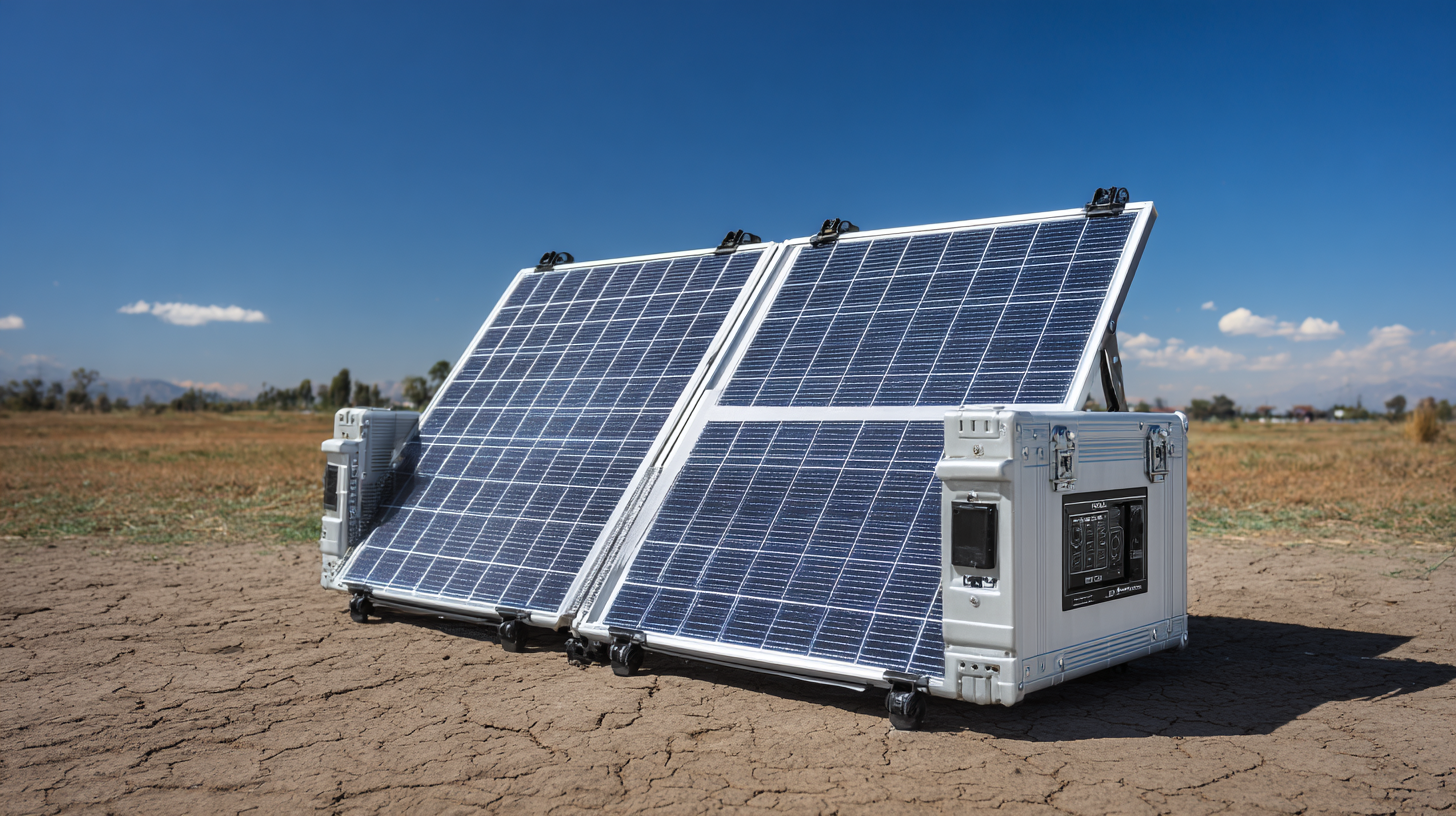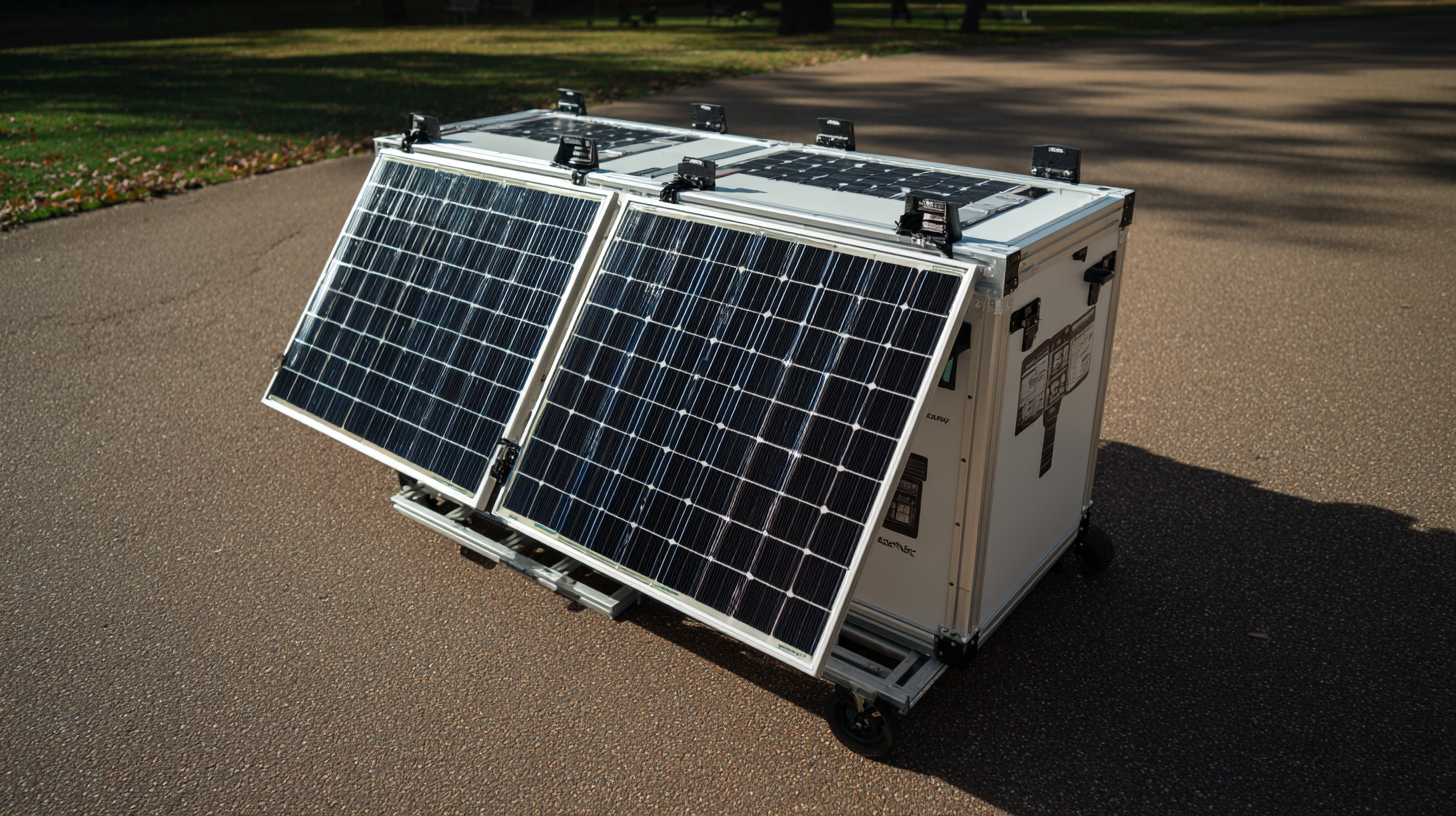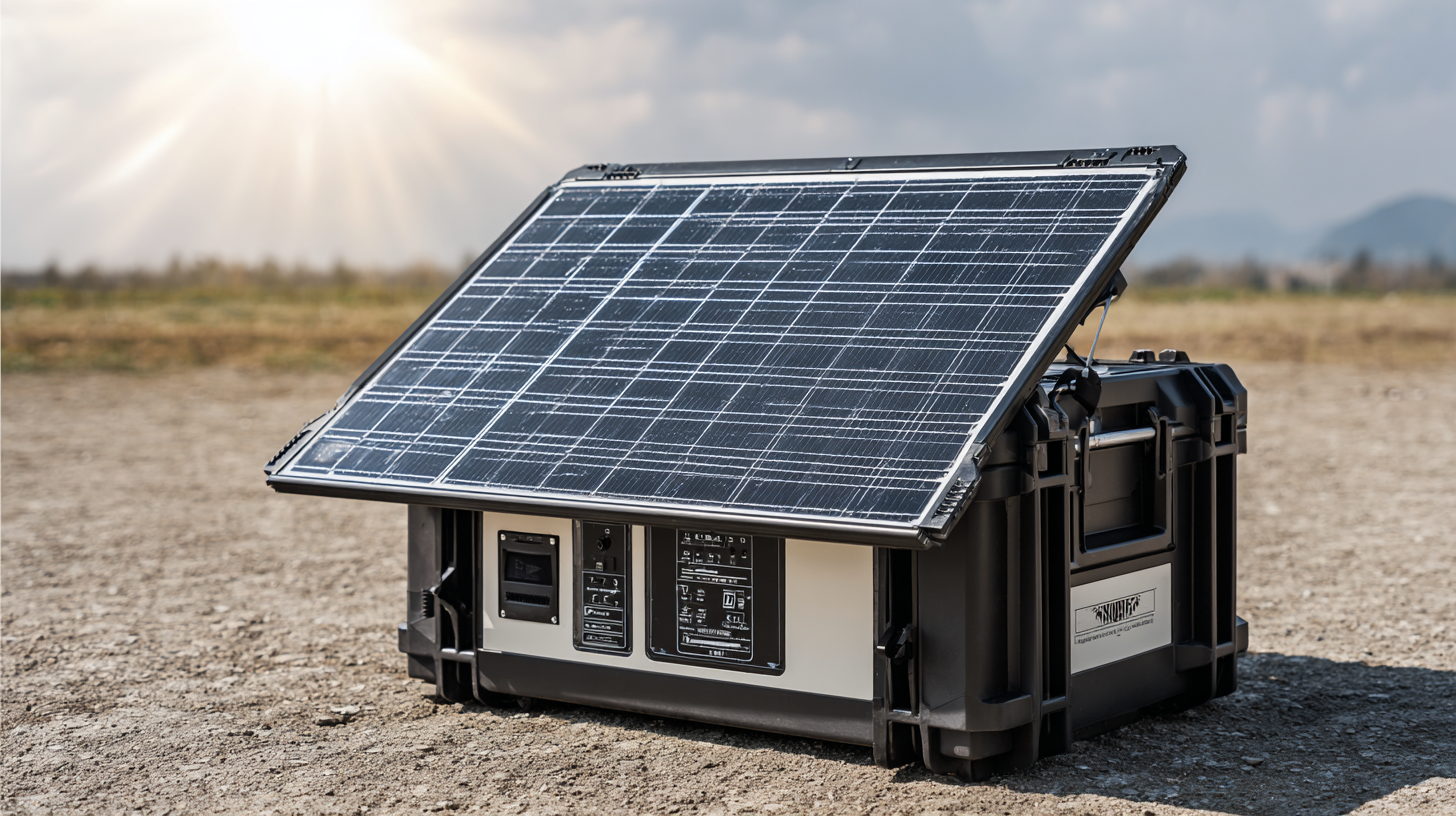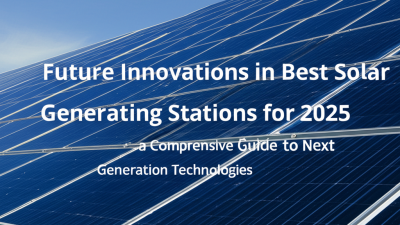2025 Solar Powered Generator Trends and Comparisons to Watch for in the Industry
Table of Contents
- Emerging Solar Technologies: What's on the Horizon for 2025
- Key Features of Solar Powered Generators to Look For in 2025
- Comparative Analysis: Leading Brands in Solar Generator Innovations
- Sustainability Trends: Enhancements in Solar Energy Efficiency by 2025
- Consumer Preferences: What Users Want from Solar Generators in the Future
- FAQS
- Related Posts
As the demand for sustainable energy solutions continues to rise, the Solar Powered Generator market is projected to experience significant growth, with estimates suggesting a CAGR of over 20% from 2023 to 2025. This surge is driven by increasing awareness of renewable energy sources and advancements in solar technology. Roofer Electronics Technology (Shanwei) Co., Ltd., with more than 27 years of expertise in R&D, manufacturing, and solution services for lithium batteries and energy storage systems, stands at the forefront of this industry transformation. Our battery products enhance the efficiency and effectiveness of solar powered generators across various applications, including household energy storage and electric bicycles. As we explore the latest trends and innovations in solar powered generators, it is essential to recognize how emerging technologies and evolving consumer preferences are reshaping the energy landscape, paving the way for a greener and more sustainable future.

Emerging Solar Technologies: What's on the Horizon for 2025
As we approach 2025, the landscape of solar technology is on the brink of significant transformation. Emerging innovations, such as bifacial solar panels—capable of capturing sunlight from both sides—are projected to enhance energy efficiency. According to a report by the International Renewable Energy Agency (IRENA), bifacial panels can yield up to 20% more energy compared to traditional panels, especially in reflective environments. With the growing demand for sustainable energy solutions, the global market for solar panels is expected to expand to $223 billion by 2026, highlighting the scalability and accessibility of advanced solar technologies.
Furthermore, solar energy storage systems are also gaining traction. The latest advancements in lithium-ion battery technology, coupled with more efficient management systems, have driven down the costs significantly. The Lazard Levelized Cost of Storage Analysis indicates that the cost of utility-scale solar-plus-storage systems has dropped by 88% since 2010. This decline not only makes solar energy more competitive but also paves the way for integration into our daily lives, promising a future where solar-powered generators can function seamlessly even during non-sunny periods. As innovations continue to evolve, the synergy between energy generation and storage will redefine our reliance on solar power by 2025.
Key Features of Solar Powered Generators to Look For in 2025
As we approach 2025, the landscape for solar powered generators is set to evolve significantly. When considering a solar generator, there are key features that users should prioritize to ensure they make an informed choice. One of the most crucial aspects is battery capacity. In 2025, leading models are expected to have advanced lithium-ion batteries that offer faster charging times and longer lifespan. Look for generators with at least 2000Wh of capacity to power essential devices during outages or while camping.
Another essential feature to consider is portability. As technology progresses, manufacturers are focusing on lightweight designs without compromising on power output. Models that incorporate foldable solar panels or rugged wheels will enhance mobility and make outdoor adventures much more convenient.
**Tip:** Always check for compatibility with various solar panel types, as many units in 2025 may provide flexibility in charging methods. Additionally, consider the inverter output; generators with pure sine wave inverters are ideal for sensitive electronics. Investing in a model that encompasses these features will not only enhance your energy independence but also ensure you're equipped for diverse power needs in the coming years.

Comparative Analysis: Leading Brands in Solar Generator Innovations
The solar generator market is poised for significant growth, with a valuation of $591.09 million in 2024 expected to surge to $632.74 million in 2025 and reach an impressive $1,018.29 million by 2030. This robust expansion highlights the increasing demand for sustainable energy solutions as consumers and businesses alike prioritize eco-friendly power sources. Innovations in solar technology are central to this trend, with various leading brands emerging as frontrunners in advancing solar generator capabilities.
A comparative analysis of these brands reveals distinct innovations in design, efficiency, and user-friendliness. The integration of advanced lithium-ion batteries, which dominate the power bank industry due to their high energy density and longevity, is becoming a critical feature in solar generators as well. This adaptation not only enhances performance but also aligns with the broader trend of energy storage technologies, which are essential for optimizing renewable energy utilization. As companies navigate the competitive landscape of solar generators, their R&D efforts will be crucial in overcoming remaining technology challenges, thus fostering sustainable growth within the industry.
2025 Solar Powered Generator Trends and Comparisons to Watch for in the Industry
| Feature | Type A | Type B | Type C |
|---|---|---|---|
| Power Output (W) | 500 | 800 | 1000 |
| Battery Capacity (Ah) | 30 | 50 | 70 |
| Weight (lbs) | 25 | 30 | 35 |
| Solar Panel Type | Monocrystalline | Polycrystalline | Bifacial |
| Charging Time (hrs) | 6 | 8 | 10 |
| Warranty (years) | 2 | 3 | 5 |
Sustainability Trends: Enhancements in Solar Energy Efficiency by 2025
As we approach 2025, the solar energy landscape is set for transformative advancements that prioritize sustainability and enhanced efficiency. One significant trend is the integration of biomimetic adaptive solar building envelopes, which are designed to mimic natural processes in order to optimize energy capture and usage. This innovation not only addresses the growing demand for renewable energy but also contributes to sustainable building design, creating resilient structures that respond to environmental changes while maximizing solar energy intake.
In addition to architectural innovations, the solar industry itself is witnessing a surge in technological advancements that drive efficiency. Enhanced photovoltaic systems and energy management solutions are emerging as the cornerstones of a sustainable future. The focus on circular economy principles and the development of innovative materials are expected to further support the industry's growth, ensuring that solar energy systems are not just efficient, but also environmentally responsible. As we move forward, these trends will play a crucial role in shaping a greener, more sustainable world by 2025.
Consumer Preferences: What Users Want from Solar Generators in the Future
As the solar generator industry evolves, understanding consumer preferences becomes crucial. A recent report by MarketsandMarkets projects that the solar generator market will reach USD 2.24 billion by 2025, driven largely by user demand for cleaner energy solutions. Consumers increasingly prioritize portability and ease of use, seeking lightweight models that can provide reliable power in diverse settings, from outdoor adventures to emergency preparedness at home.
Data from a survey conducted by Statista reveals that 67% of potential buyers prefer solar generators with a longer battery life and faster charging capabilities. This trend reflects a growing desire for efficiency and reliability, as users aim to maximize outdoor experiences without sacrificing power. Additionally, consumers are becoming more eco-conscious, with 72% of respondents indicating that sustainability is a top consideration when purchasing solar generators. This shift highlights the importance of manufacturers focusing on not just performance, but also the environmental impact of their products in order to align with consumer values.

FAQS
: The solar generator market is expected to reach USD 2.24 billion by 2025.
The growth is primarily driven by increasing consumer demand for cleaner energy solutions and sustainable power sources.
Consumers prioritize portability, ease of use, longer battery life, and faster charging capabilities.
According to a survey, 67% of potential buyers prefer solar generators with a longer battery life and faster charging capabilities.
Sustainability is a top consideration for 72% of consumers when purchasing solar generators, indicating a strong eco-conscious mindset.
The integration of advanced lithium-ion batteries is becoming a critical feature, as they enhance performance and align with energy storage technologies.
Consumers want to use solar generators for various settings, including outdoor adventures and emergency preparedness at home.
Brands are focusing on innovations in design, efficiency, and user-friendliness to meet consumer demands.
R&D efforts are crucial for overcoming technology challenges and fostering sustainable growth within the solar generator market.
The analysis reveals a robust expansion in the market, driven by the increasing demand for sustainable energy solutions.
Blog Tags:





 business@roofer.cn
business@roofer.cn +86 13502883088
+86 13502883088








